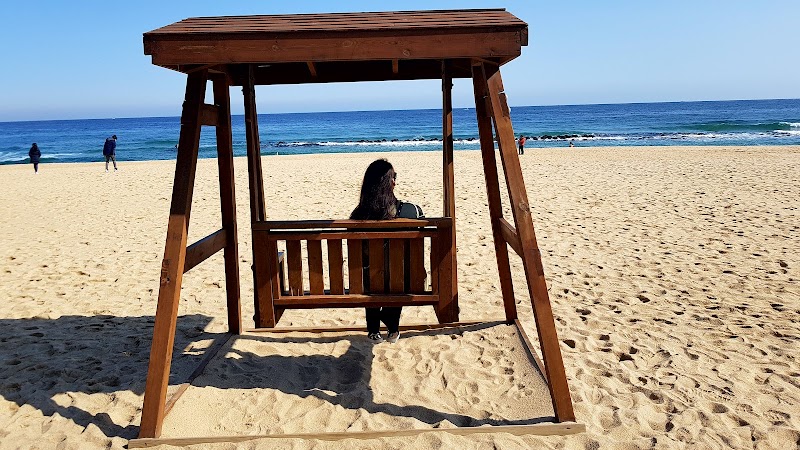
Yeongdeok’s Local Seafood Markets: A Practical Guide to Fresh Catch and Culture
Yeongdeok’s seafood markets bring you face-to-face with some of Korea’s freshest sea bounty, from snow crabs to live octopus. Experience a lively, practical seafood shopping adventure deeply rooted in local coastal culture.
Visit Early for Best Selection
Arrive shortly after the fishermen bring in their catch, usually between 6-8 AM, to access the freshest seafood and avoid crowds.
Bring a Cooler or Insulated Bag
Seafood must stay cold to maintain freshness, so bring proper storage to safely carry your purchases.
Carry Cash
While some vendors accept cards, many prefer cash transactions—having Korean won on hand smooths your buying experience.
Wear Comfortable Shoes
Markets can become crowded and slip hazards are common from wet floors, so footwear with good grip is advised.
Yeongdeok’s Local Seafood Markets: A Practical Guide to Fresh Catch and Culture
In the coastal stretch of Yeongdeok, Gyeongsangbuk-do, seafood markets pulse with vibrant energy, beckoning anyone drawn to fresh flavors pulled straight from the sea. Yeongdeok is renowned for its snow crab, but the local markets offer much more—octopus writhing in tanks, glistening shellfish, and the humble yet acclaimed seaweed variety. These markets aren’t just shopping spots; they are hubs of tradition, where the salt air mingles with the clamoring of vendors and the sharp tang of the ocean itself dares you to dive in.
Entering a Yeongdeok seafood market is a sensory experience firmly grounded in practicality. Stalls stretch across narrow lanes, coolers brim with freshly hauled treasures, and fishmongers wield knives with practiced precision. The terrain? Mostly flat and easily navigable, though expect crowds during peak hours, which can make maneuvering a challenge. Many vendors communicate straightforwardly—no frills, just the freshest seafood you can buy here.
Timing your visit is key. Early mornings, right after the day’s haul lands, offer the best selection. By mid-afternoon, many choice items shrink as locals and restaurateurs snap them up. Plan to arrive with a cooler or insulated bag if you want to take your catch home, and try to bring cash—while cards are increasingly accepted, some stalls still prefer bills.
The markets take seriously the balance between freshness and respect for the sea’s gifts. Seasonal shifts bring shifts in stock: small fish rule the warmer months; winter highlights the prized snow crab, heavy and sweet. Keep an eye out for live tanks where octopus challenge you with a quiet, alien intelligence, or for the seaweed sellers who proudly display their hand-harvested bundles, a staple in Korean cuisine.
Nearby, the ocean performs its relentless work: currents push forward, relentless and shaping life on these shores. You’ll find simple eateries nearby serving up grilled shellfish or freshly made sashimi, often prepared on the spot from your market purchase.
For travelers, local markets offer a hands-on immersion into Korean coastal life, without theatrics. Consider this not just a place to shop, but a place to understand a community that thrives by the sea’s generosity and unpredictability. Come prepared, stay curious, and let Yeongdeok’s seafood markets teach you about the rhythm of the tides and the tastes of the coast.
Nearby Trips
All Adventures
Boat Charters
Water Activities
Adventures near Yeongdeok, Gyeongsangbuk-do
Discover the unique and memorable adventures that make Yeongdeok, Gyeongsangbuk-do special.
Frequently Asked Questions
What makes Yeongdeok’s seafood markets unique compared to other Korean coastal markets?
Yeongdeok is celebrated for its snow crabs, considered among Korea’s best. Unlike some tourist-focused markets, Yeongdeok’s markets retain a direct connection to local fishermen and daily catches, emphasizing fresh, seasonal, and minimally processed seafood.
Are there any local seafood specialties I should try when visiting the market?
Yes, snow crab is the highlight, but also try local octopus (san-nakji) often served live, fresh shellfish varieties like clams and oysters, and hand-harvested seaweed, which plays a big role in traditional dishes.
Can I eat freshly purchased seafood on-site? Are there restaurants nearby?
Many markets allow vendors to prepare seafood for immediate consumption or take it to nearby eateries that grill or serve it sashimi-style. It’s common to buy, eat, and enjoy right beside the market.
What should I be mindful of regarding marine conservation while visiting?
Sustainability is important here. Buy seasonal seafood to avoid depleting stocks, avoid single-use plastics by bringing your own bags, and respect local fishing regulations reflected in market offerings.
Is there a best time of day or week to visit to avoid crowds?
Early weekday mornings (6-8 AM) are ideal for fresh catch and fewer people. Weekends and holidays tend to attract larger crowds, which can slow your exploration.
What local wildlife might I see around these coastal market areas?
Seagulls and crows are frequent competitors for scraps, their honks a constant soundtrack. Occasionally, shorebirds like sandpipers and egrets forage nearby, blending the wild and commercial sides of the coast.
Recommended Gear
Insulated Cooler or Bag
Keeps seafood fresh during transport, especially when traveling some distance from the market.
Waterproof Comfortable Shoes
Essential for navigating wet and sometimes slippery floors, with added importance in colder months.
Cash in Korean Won
Ensures smooth transactions at market stalls that may not accept cards.
Sun Protection (Hat and SPF)
Shield yourself during early summer market visits when waiting outside.
Local Insights
Hidden Gems
- "Small vendor alleys off the main market street where hand-prepared kimchi and seafood pickles are sold"
- "Secluded viewing piers near the market with clear views of fishing boats returning"
Wildlife
- "Seagulls known to interact boldly with vendors"
- "Occasional sightings of coastal crabs and shorebirds near market docks"
History
"Yeongdeok’s seafood trade dates back centuries, shaped by its strategic coastal location and enduring fisherman communities who maintained traditional harvesting methods."
